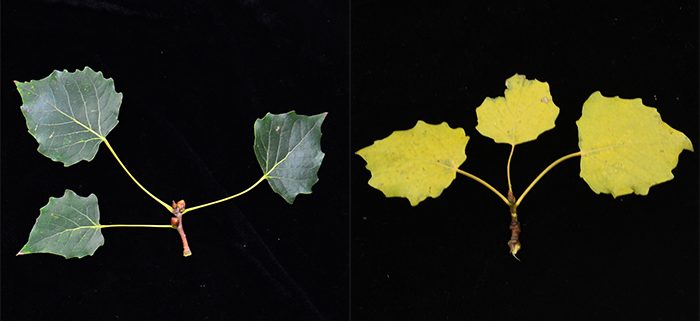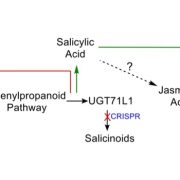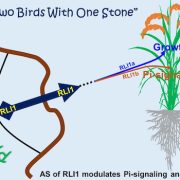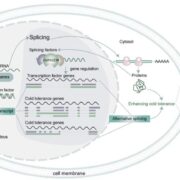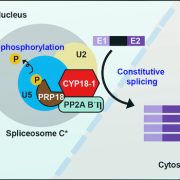A multiply-interlocked regulatory loop in seasonal leaf senescence
By Hou-Ling Wang, Yi Zhang, Hongwei Guo and Zhonghai Li, Beijing Forestry University and Southern University of Science and Technology
Background: Leaf senescence is one of the most common developmental phenomena in nature, and it helps to create splendid scenery in autumn. Leaf senescence involves slow programmed cell death processes that ensure effective remobilization of nutrients from senescent leaves to other organs, such as developing seeds in annual plants or stems in perennial woody plants. The timing of autumn leaf senescence greatly impacts the productivity of deciduous forest ecosystems. However, the molecular regulatory mechanisms of leaf senescence in trees remain largely unclear. To identify autumn senescence-associated genes, we used high-resolution temporal transcriptome analysis in poplar, and we explored their regulatory functions during leaf senescence.
Questions: How is autumn leaf senescence of woody plants regulated? What are the similarities and differences in the regulatory mechanisms of leaf senescence between annual and perennial plants?
Findings: We identified 3,459 autumn senescence-associated genes through high-resolution temporal transcriptome analysis, and we also identified 115 hub senescence-associated transcription factors (Sen-TFs) from 31 families though weighted gene co-expression network analysis in poplar. Among hub Sen-TFs, the NAC family TF PtRD26 displayed the highest expression level during autumn leaf senescence, and it regulated many other Sen-NAC TFs by binding to their promoter regions. An alternative splicing event retaining the first intron of the PtRD26 pre-mRNA occurred in a senescence-associated manner. The intron retention (IR) event in PtRD26 resulted in an alternative splicing variant, PtRD26IR, which encodes a truncated protein. PtRD26IR forms heterodimers with multiple hub Sen-NAC TFs, represses their DNA binding activity, and delays age-, dark- and PtRD26-induced leaf senescence. PtRD26 might regulate other Sen-NAC TFs directly by promoter binding or indirectly using PtRD26IR, thereby forming a multiply-interlocked feed-forward loop to finely tune the leaf senescence process.
Next steps: We are developing PtRD26pro:PtRD26IR transgenic poplars to study the effect of PtRD26IR on plant growth and leaf senescence. We also plan to identify the target genes of hub Sen-NAC TFs using DNA affinity purification and sequencing, to construct a complete hierarchical transcriptional regulatory network, and to examine the regulatory function of PtRD26IR on these targets in order to define this multiply-interlocked feed-forward regulatory network.
Hou-Ling Wang, Yi Zhang, Ting Wang, Qi Yang, Yanli Yang, Ze Li, Bosheng Li, Xing Wen, Wenyang Li, Weilun Yin, Xinli Xia, Hongwei Guo, and Zhonghai Li. (2021). An alternative splicing variant of PtRD26 delays leaf senescence by regulating multiple NAC transcription factors in Populus. The Plant Cell. https://doi.org/10.1093/plcell/koab046


